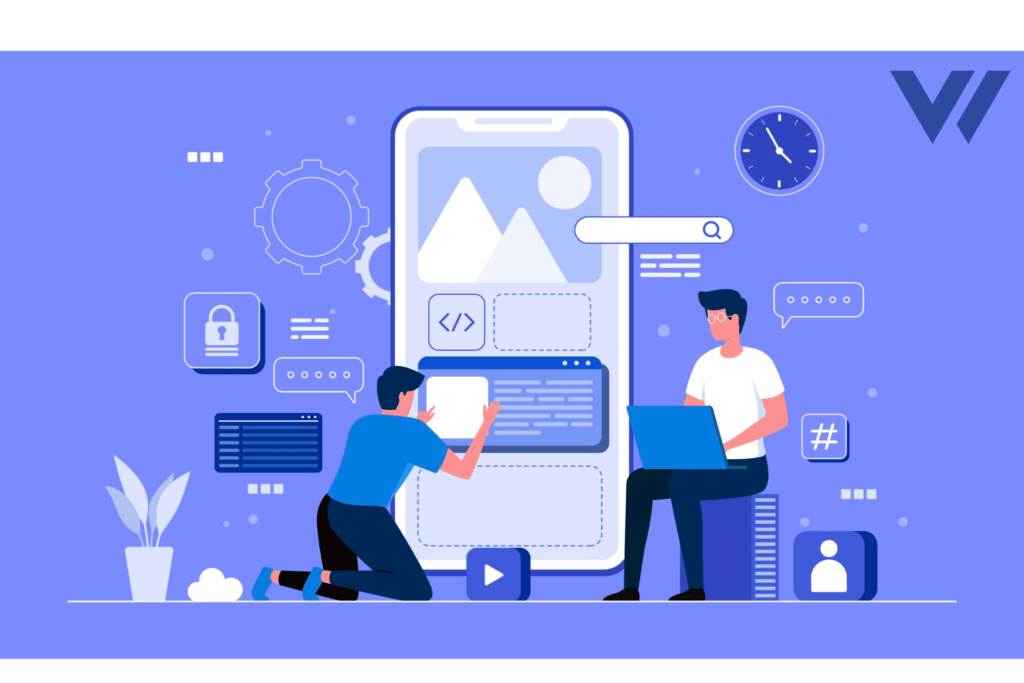How Much Does Headless Cost?
In today’s digital landscape, businesses are constantly seeking ways to enhance their online presence, deliver immersive user experiences, and achieve greater flexibility in content management. One solution that has gained significant popularity is the adoption of a headless architecture. However, before diving into this approach, it’s crucial to understand the cost implications associated with implementing a headless CMS.
Introduction
A headless architecture decouples the front-end presentation layer from the back-end content management system (CMS), enabling businesses to leverage the benefits of both worlds. By separating the two components, organizations gain the freedom to choose their preferred technology stack for each, resulting in increased flexibility and faster development cycles.
What is Headless Architecture?

Headless architecture refers to a CMS setup where the content repository, also known as the back end, is separated from the front-end presentation layer. In this approach, the content is stored and managed through a CMS, while the delivery and rendering of the content are handled by an API or microservices. This decoupling allows content to be delivered to various channels, such as websites, mobile apps, smart devices, and more.
Benefits of Headless Architecture
Implementing a headless architecture offers numerous benefits that contribute to improved performance, scalability, and overall user experience. Some of the key advantages include:
Flexibility: With a headless CMS, businesses have the freedom to choose the most suitable front-end frameworks and technologies, enabling them to deliver tailored experiences across multiple platforms.
Enhanced Performance: By removing the monolithic structure of traditional CMS platforms, headless architecture allows for faster page load times and optimized performance.
Future-proofing: Headless CMS solutions are designed to be agile and adaptable, ensuring that businesses can easily incorporate emerging technologies and scale their digital presence without constraints.
Multi-channel Delivery: With headless CMS, content can be seamlessly delivered to various platforms and devices, including websites, mobile apps, IoT devices, and more.
Improved Collaboration: Headless architecture promotes a streamlined workflow between developers and content creators, enabling simultaneous updates and faster iterations.
Factors that influence the cost of a headless commerce website
Development and design costs
- Backend development: This involves building the commerce functionality, including product catalog management, inventory management, shopping cart, and checkout process. The complexity of these features will impact the development cost.
- Frontend development: Creating the user interface and experience (UI/UX) for the website involves designing templates, navigation, product display, and interactive elements. The design complexity and customization requirements contribute to the frontend development cost.
- Integration with third-party systems: If you plan to integrate your headless commerce website with existing systems like customer relationship management (CRM), enterprise resource planning (ERP), or marketing automation tools, additional costs may be incurred.
Hosting and infrastructure costs
Headless commerce websites typically require cloud-based hosting to ensure scalability and high availability. The hosting costs depend on factors such as traffic volume, data storage, and computational resources needed.
Content Delivery Network (CDN): To ensure fast and reliable content delivery across the globe, implementing a CDN may be necessary. CDN costs vary based on usage and the geographical distribution of servers.
Ongoing maintenance and support costs
As with any website, headless commerce websites require regular maintenance and updates to ensure optimal performance and security. This includes bug fixes, security patches, platform upgrades, and ongoing support. The cost of maintenance and support should be factored into your budget.
Integration and customization costs
If you require specific integrations or customizations for your headless commerce website, such as integrating with a custom payment gateway or implementing unique features, additional development costs may arise.
Third-party service costs
Depending on your business requirements, you may need to invest in third-party services such as analytics tools, marketing automation platforms, or email service providers. These services may have subscription or usage-based fees that contribute to the overall cost.
Cost comparison with traditional commerce websites
It’s important to note that headless commerce websites generally have higher upfront costs compared to traditional commerce websites built on monolithic platforms. However, they offer greater flexibility, scalability, and customization options that can deliver long-term benefits and potentially lower total cost of ownership.
How to optimize the cost of a headless commerce website?
While the cost of a headless commerce website can vary depending on individual business needs, there are several strategies to optimize expenses:
- Define clear requirements: Clearly outline your business requirements and prioritize features to avoid unnecessary development and customization costs.
- Choose a suitable technology stack: Selecting the right technology stack that aligns with your business goals and requirements can help optimize costs by leveraging existing tools and frameworks.
- Consider open-source solutions: Open-source platforms and frameworks can provide cost-effective alternatives to proprietary software, reducing licensing and development costs.
- Partner with experienced professionals: Collaborating with experienced developers and agencies who specialize in headless commerce can help streamline the development process, minimize errors, and optimize costs.
- Plan for scalability: Design your headless commerce website with scalability in mind to accommodate future growth and prevent costly rework.
Webnexs is an e-commerce development platform that offers a range of solutions for businesses looking to establish or enhance their online presence. While Webnexs can be cost-efficient and prescribe the right tech option for certain e-commerce development needs, it’s important to evaluate its suitability based on your specific requirements. Here are a few factors to consider when assessing the cost efficiency of Webnexs:
Pricing structure: Review the pricing plans offered by Webnexs and compare them to other e-commerce development platforms or custom development options. Consider the features and services included in each plan and determine if they align with your needs. Additionally, check if there are any additional costs or fees associated with using Webnexs.
Customization options: Assess the level of customization available with Webnexs. Depending on your business requirements, you may need the flexibility to tailor the platform to your unique needs. If Webnexs provides the necessary customization options without incurring significant costs, it can contribute to cost efficiency.
Scalability: Consider the scalability of the Webnexs platform. As your business grows, you may need to expand your online operations and accommodate increasing traffic or product catalogs. Evaluate if Webnexs can support your scalability needs without requiring extensive upgrades or additional expenses.
Technical support and maintenance: Assess the level of technical support and maintenance provided by Webnexs. Determine if it aligns with your requirements and if there are any associated costs. Adequate support can contribute to cost efficiency by reducing the need for external assistance or dedicated in-house resources.
Integration capabilities: Evaluate Webnexs’ ability to integrate with other systems and third-party services, such as payment gateways, shipping providers, or inventory management tools. Seamless integration can enhance operational efficiency and potentially reduce costs by streamlining processes.
User experience and functionality: Consider the user experience and functionality offered by Webnexs. Ensure that it provides the necessary features and capabilities to meet your business goals. A comprehensive platform that reduces the need for additional plugins or development work can contribute to cost efficiency.
Reviews and testimonials: Research customer reviews and testimonials about Webnexs. This can provide insights into the platform’s performance, reliability, and cost efficiency. Consider the experiences of other businesses that have used Webnexs to gauge its suitability for your specific needs.
Ultimately, the cost efficiency of using Webnexs will depend on how well it aligns with your e-commerce development requirements. Assess its pricing structure, customization options, scalability, support, integration capabilities, and user experience to make an informed decision.
Conclusion
In conclusion, the cost of a headless commerce website can vary based on factors such as development, design, hosting, maintenance, and integrations. While it may have higher upfront costs compared to traditional websites, the flexibility and scalability it offers can provide long-term benefits and potentially lower the total cost of ownership.
Frequently Asked Questions (FAQs)
u003cstrongu003eWhat is the average cost of developing a headless commerce website?u003c/strongu003e
The average cost of developing a headless commerce website can vary widely depending on the complexity of the project, desired features, customization requirements, and development resources involved. It is best to consult with experienced professionals to get accurate cost estimates tailored to your specific needs.
u003cstrongu003eAre there ongoing costs associated with a headless commerce website?u003c/strongu003e
Yes, headless commerce websites require ongoing maintenance and support to ensure optimal performance and security. Additionally, hosting and infrastructure costs, as well as any third-party services or integrations, may incur recurring fees.
u003cstrongu003eCan I migrate my existing commerce website to a headless architecture?u003c/strongu003e
Yes, it is possible to migrate an existing commerce website to a headless architecture. However, the cost and complexity of the migration process will depend on factors such as the size of your website, the platform it is built on, and the extent of customization required.
u003cstrongu003eAre there any cost-saving alternatives to a headless commerce website?u003c/strongu003e
Traditional commerce platforms can be more cost-effective in the short term, but they may lack the flexibility and scalability offered by headless commerce. It’s important to evaluate your business needs and long-term goals before deciding on the best solution for your specific requirements.
u003cstrongu003eHow long does it take to develop a headless commerce website?u003c/strongu003e
The development timeline for a headless commerce website can vary depending on the project’s complexity, design requirements, integrations, and development resources. It is recommended to work closely with your development team to establish realistic timelines based on your specific project scope.


